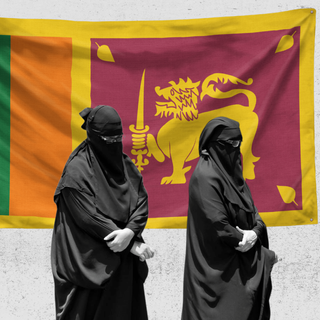
Sedition Cases Are “Quite Low,” Government Says, but Cases Have Almost Doubled Since 2014
Experts have expressed concern over misuse of sedition laws to “use, abuse and chill free speech.”

Sedition cases are not unique to the Narendra Modi government and are fewer in comparison to its predecessors, Minister of State for Home Affairs G. Kishan Reddy said in the Lok Sabha on Tuesday. He insisted that there is nothing to hide and that these cases are “quite low” in number, citing the National Crime Records Bureau (NCRB)’s figures.
According to NCRB’s data, the numbers of sedition cases filed were 47 in 2014, 30 in 2015, 35 in 2016, 51 in 2017, 70 in 2018, and 93 in 2019. But the number of sedition cases has risen from 47 in 2014 to 93 in 2019, effectively doubling in the five years since the BJP came to national power. This data also doesn’t include sedition cases over the last two years.
Reddy’s statement was in response to a question by Congress MP Manish Tewari in Lok Sabha, who referenced the arrest of climate activity Disha Ravi last month to broach the issue of cases registered since 2011 under the sedition law of IPC Section 124A, which is punishable with life imprisonment. However, Reddy, of the BJP, said that statistics around sedition under Congress rule were similar, if not more. He also claimed that Congress was opaque in releasing data around sedition cases, and did not maintain a separate data set (like the BJP government does under NCRB) but rather clubbed them with other Indian Penal Code cases.
“There are 130 crore people in India. The media has become quite aware and often gives high sermons on democracy, but despite that, the number of cases of sedition is quite low,” Reddy said.
Related on The Swaddle:
While India’s ruling government maintains that the use of Section 124 is nothing out of the ordinary, experts and activists beg to differ. In the last month, two independent think tanks, the Swedish Institute V-Dem and the U.S.-based Freedom House, downgraded India’s democratic status. The arbitrary use of sedition laws against activists, journalists, and civil organizations constituted one of the key reasons. The Modi government and authorities had used “security, defamation, sedition, and hate speech laws, as well as contempt-of-court charges, to quiet critical voices in the media,” the Freedom House report s.tated India also dropped in an international ranking for academic freedom last year, with the report noting that the “space for ideas and dialogue in India is being constricted, and dissent punished.”
A database by Article 14 found that under the current BJP government, 519 sedition cases were filed between 2014 and 2020, in comparison to 279 filed between 2010 and May 2014 during the tenure of the previous government. Its findings also noted the following: six sedition cases were lodged during the farmers’ protests; 25 during anti-CAA protests; 22 after the Hathras gangrape; 27 after Pulwama. These selected instances in the last two years account for 80 cases. “It is now clear [from these data] that the law is not being misused, but is being abused,” retired Justice Madan Lokur, a former judge of the Supreme Court, tells Article 14.
Chitranshul Sinha, author of The Great Repression: The Story of Sedition in India, found that most sedition cases end up in acquittal or remain pending; few go to trial often because police fail to provide sufficient evidence for the arrests. He argues in Article 14 that the sedition law has been further weaponized by the enactment of the Unlawful Activities (Prevention) Act, 1967 (UAPA) and the National Investigation Agency Act (NIA Act).
The pattern behind slapping sedition cases on dissenters paints a grim picture for free speech and civil liberty. Arguably, more than the number, it is the intent behind the usage of sedition laws that is concerning. India’s sedition law and Article 124 have been disparaged by commentators, termed as a draconian, 151-year-old, colonial-era legislation. Carrying a term of life imprisonment, the law makes it a criminal offense to foster “disaffection” against the government.
Cases in the last two months themselves serve as a reminder: Disha Ravi was arrested for editing a Google document, but it was deemed seditious in the eyes of the government. A Delhi Court last month granted bail to two men accused of sedition for sharing a Facebook post that allegedly spread pro-farmers’ protest misinformation, observing that the law of sedition “cannot be invoked to quieten the disquiet under the pretense of muzzling the miscreants.” Sedition cases have also been lodged against some farmers for rioting in Delhi on Republic Day. Sedition cases against critics and protesters of the ruling government have increased by 28% since 2014. Despite any concrete evidence, these cases carry a sinister message, threatening punitive action if one chooses to speak against the state or show dissent.
Notably, an official panel instituted by the government, which detracted global reports around India’s declining media freedom, also came in support of decriminalizing the offense of defamation.
Comparing now-and-then figures (which still exclude data between 2019-2021) runs the risk of minimizing the danger of criminalizing dissent. If the government insists on treating this as a number game, it must remember that every game ends with a winner and loser — free speech and human liberty seem to be on the losing side on this one.
Saumya Kalia is an Associate Editor at The Swaddle. Her journalism and writing explore issues of social justice, digital sub-cultures, media ecosystem, literature, and memory as they cut across socio-cultural periods. You can reach her at @Saumya_Kalia.
Related


Police Who Leak Private Data During an Investigation Should Be Penalized: Karnataka HC
